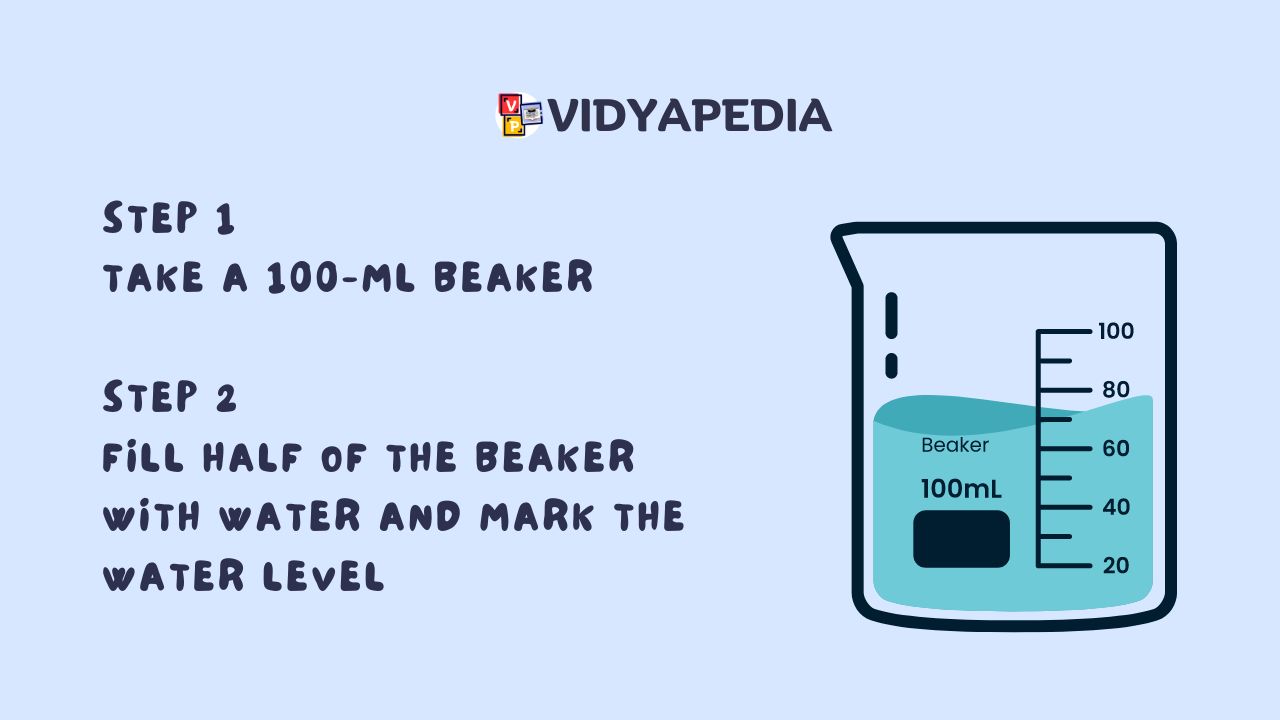Activity
In this activity 1.1 class 9 science, we’ll explore how adding salt to water leads to different processes and observations. This hands-on experiment helps students understand fundamental concepts in chemistry. Let’s delve into Activity 1.1:
Take a 100-mL beaker
Get a small glass container that can hold up to 100 milliliters of liquid.

Fill half of the beaker with water and mark the water level.
Pour water into the beaker until it’s halfway full, and make a small mark on the side of the beaker to show where the water level is.
Put some salt or sugar into the water and mix it with a glass rod.
Add a small amount of salt or sugar to the water and use a glass rod to stir it gently until the salt or sugar seems to disappear.
Process: This step is called “dissolving.” It means the salt or sugar particles are mixing with the water molecules, creating a new mixture called a solution.

Look to see if the water level changes.
After stirring in the salt or sugar, observe if the water level in the beaker rises, falls, or stays the same.
Observation: If the water level changes, it means the volume of the solution has changed because of the added salt or sugar.
Think about what might have happened to the salt or sugar.
Consider whether all of the salt or sugar has disappeared into the water or if you can still see some solid pieces.
Justification: If all the salt or sugar particles have mixed evenly with the water, the solution will appear clear. If not, you might still see some particles floating around.
Notice where the salt or sugar goes.
Pay attention to whether the salt or sugar has dissolved completely into the water or if there are still some visible pieces.
Observation: If the salt or sugar particles are no longer visible and seem to have mixed completely into the water, it means they’ve dissolved.
See if the water level changes.
Check if the level of the water in the beaker changes after adding and mixing in the salt or sugar.
Observation: If the water level remains the same, it means the volume of the solution hasn’t changed much.
Additional Steps:
Write down how long it takes for the salt or sugar to disappear.
Record the time it takes for the salt or sugar to completely dissolve into the water. This helps understand the rate at which the solute dissolves in the solvent.
Measure how hot the water is before and after you add the salt or sugar.
Use a thermometer to measure the temperature of the water before adding the salt or sugar and then again after mixing them in. This helps observe if dissolving the solute affects the temperature of the solution.
Check if the water can conduct electricity by using a special device.
Use a device called a conductivity meter to test if the solution can carry an electric current. If the solution conducts electricity, it means the salt or sugar has broken into charged particles (ions) when dissolved in water. This helps understand the electrolytic properties of the solution.

